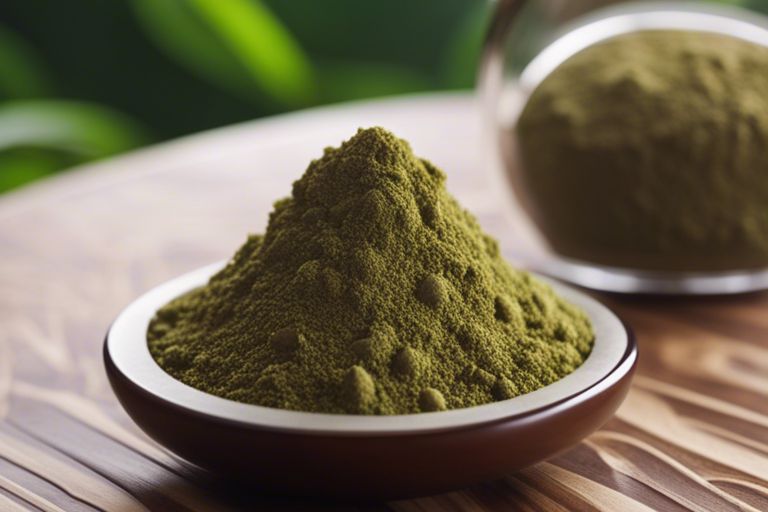Deprecated: mb_convert_encoding(): Handling HTML entities via mbstring is deprecated; use htmlspecialchars, htmlentities, or mb_encode_numericentity/mb_decode_numericentity instead in /home/users/kratomfiles/www/kratomfiles.com/wp-content/plugins/quick-adsense-reloaded/includes/template-functions.php on line 3544
Curious minds often wonder: is kratom truly an opioid? This question explores into the complexities of this controversial botanical substance, its effects, and potential risks. Understanding the differences and similarities between kratom and traditional opioids is crucial for forming an informed opinion on its use. Let’s unravel the truth behind this intriguing debate.
Key Takeaways:
- Kratom Possesses Opioid-Like Properties: Kratom interacts with the brain’s opioid receptors, similar to how opioids do, but its effects are milder and less likely to cause respiratory depression.
- Kratom is Not Technically an Opioid: While kratom acts on opioid receptors, it is a botanical substance derived from a tree native to Southeast Asia, distinct from synthetic opioids.
- Kratom Research is Ongoing: Further scientific studies are needed to fully understand kratom’s effects on the body, its potential for addiction, and its therapeutic uses.


Defining Opioids
What are opioids?
A widely used term in medicine and pharmacology, opioids refer to a class of substances that act on opioid receptors in the body to produce morphine-like effects. These effects can range from pain relief and sedation to euphoria and respiratory depression. Examples of opioids include prescription painkillers like oxycodone, hydrocodone, and fentanyl, as well as illicit drugs such as heroin.
Characteristics of opioids
Opioids are known for their potent pain-relieving properties, making them valuable in medical settings for managing severe pain. However, their addictive potential and the risk of overdose are significant concerns associated with their use. These substances can lead to physical dependence and tolerance, requiring higher doses to achieve the same effects over time.
This class of drugs also has a high potential for misuse and addiction, contributing to the opioid epidemic that has plagued many countries in recent years. With their ability to produce feelings of euphoria and relaxation, opioids can be highly addictive, leading to devastating consequences for individuals and communities.
Kratom: A Brief Overview
What is kratom?
Overview: Kratom, scientifically known as Mitragyna Speciosa, is a tropical evergreen tree native to Southeast Asia. It belongs to the same family as the coffee plant and has been used for centuries for its stimulant and sedative effects.
History and traditional use of kratom
On the history and traditional use of kratom: Kratom has been used in traditional medicine in Southeast Asia for its various health benefits, including pain relief, energy enhancement, and mood improvement. It was often chewed, brewed into a tea, or used in cooking by the locals.
History: The use of kratom dates back hundreds of years in countries such as Thailand, Malaysia, and Indonesia. While it has been an integral part of traditional medicine and cultural practices in these regions, kratom has also faced controversy and legal restrictions in recent years due to concerns about its safety and potential for abuse.
Chemical Composition of Kratom
Alkaloids in Kratom
For many years, researchers have been studying the chemical composition of kratom to understand its effects on the human body. One of the most intriguing aspects of kratom is its unique alkaloid composition. Alkaloids are organic compounds that often have potent physiological effects on humans. In kratom, the primary alkaloids responsible for its effects are mitragynine and 7-hydroxymitragynine.
Mitragynine and 7-hydroxymitragynine: Key Compounds
Kratom contains several alkaloids, but mitragynine and 7-hydroxymitragynine are the key compounds that interact with opioid receptors in the brain. These compounds are responsible for the analgesic and euphoric effects reported by users. Mitragynine acts as a partial agonist at the mu-opioid receptor, while 7-hydroxymitragynine is said to be even more potent, with a higher affinity for the receptor.
Kratom users often seek the effects of these alkaloids to manage pain or enhance their mood. However, the interaction of these compounds with opioid receptors raises concerns about addiction potential and respiratory depression, similar to traditional opioids.
Pharmacological Effects of Kratom
Binding to opioid receptors
The pharmacological effects of kratom are complex and involve multiple pathways. The active compounds in kratom, such as mitragynine and 7-hydroxymitragynine, have been shown to bind to opioid receptors in the brain. These receptors play a role in pain relief, sedation, and euphoria, which are effects commonly associated with opioids.
Activation of non-opioid receptors
Receptors Other than binding to opioid receptors, kratom also interacts with other neurotransmitter systems in the brain, including serotonin and dopamine receptors. This interaction can contribute to its stimulant effects, mood enhancement, and potential antidepressant properties.
Effects: Kratom’s interaction with the adrenergic and dopaminergic systems can lead to increased energy levels, improved focus, and feelings of pleasure and well-being. These effects may vary depending on the dosage and individual tolerance levels.
Comparison to opioid effects
| For | Opioid |
| Pain relief | Potentially more subtle but still effective |
| Euphoria | Less intense compared to traditional opioids |
| Respiratory depression | Minimal risk compared to traditional opioids |
Comparison to opioid effects: When comparing kratom’s effects to traditional opioids, it is important to note that kratom’s effects on pain relief and euphoria may be less potent. Additionally, the risk of respiratory depression, a dangerous side effect of opioids, is relatively minimal with kratom use. However, both substances can lead to tolerance, dependence, and withdrawal symptoms if used excessively.
Is Kratom an Opioid? The Debate
All Kratom for opioid withdrawal: Does it work? Evidence regarding kratom’s classification as an opioid presents a contentious subject within the medical community. Let us probe into the arguments for and against kratom being classified as an opioid.
Arguments for kratom being an opioid
Opioid advocates argue that kratom activates opioid receptors in the brain, yielding effects akin to traditional opioids. Additionally, it exhibits similar withdrawal symptoms and potential for addiction, aligning with classic opioid characteristics.
Arguments against kratom being an opioid
For those opposing kratom’s classification as an opioid, they emphasize its distinct chemical composition and unique mechanism of action compared to traditional opioids like heroin or morphine. They contend that kratom’s effects are milder and less pronounced than typical opioids.
It is imperative to consider the complexities surrounding the debate on kratom’s classification. Some researchers suggest that a nuanced approach is required to accurately classify kratom, considering both its similarities and differences with traditional opioids.
Regulatory perspectives on kratom
Arguments from a regulatory standpoint also vary widely. While some advocate for strict regulations due to potential risks associated with kratom use, others argue for its potential medicinal benefits in managing pain and opioid withdrawal symptoms.
To navigate this debate effectively, it is crucial to weigh the potential risks of addiction and adverse effects against any possible therapeutic benefits that kratom may offer. Collaboration between healthcare professionals, researchers, and regulatory agencies is necessary to establish comprehensive guidelines that prioritize public health and safety.
Potential Risks and Side Effects
Dependence and withdrawal symptoms
To understand the potential risks of kratom, it’s important to recognize that this herbal supplement can lead to dependence and withdrawal symptoms. Kratom: Unsafe and ineffective is a concerning aspect that individuals should be aware of. Those who use kratom regularly may develop a tolerance to its effects, leading to the need for higher doses to achieve the desired results.
Interactions with other substances
With the increasing popularity of kratom, it becomes crucial to understand how it may interact with other substances. Individuals using kratom should be cautious about combining it with prescription medications, as certain drug interactions can occur. It’s advisable to consult with a healthcare professional before using kratom alongside other substances.
Withdrawal symptoms may exacerbate if kratom is mixed with substances that also impact the central nervous system, potentially leading to adverse health effects.
Reported adverse effects
Potential adverse effects of kratom include nausea, constipation, dry mouth, increased urination, and loss of appetite. It’s important for users to be mindful of these side effects and seek medical attention if they experience any severe symptoms. Understanding the potential risks and side effects associated with kratom is crucial for making informed decisions about its usage.
Understanding the reported adverse effects can help individuals weigh the benefits against the potential drawbacks of using kratom, promoting responsible consumption and ensuring overall well-being.
To wrap up
After examining the evidence and research surrounding kratom, it is clear that while this botanical substance has properties that interact with opioid receptors in the brain, it does not belong in the same category as traditional opioids. Kratom’s alkaloids may produce similar effects to opioids, but its mechanisms of action and potential for harm appear to be different.
By delving into the complexities of kratom’s pharmacology and effects, we can see that labeling it as solely an opioid oversimplifies its nature. As the debate continues about its legality and potential uses, it is crucial to approach kratom with a nuanced understanding that acknowledges its unique characteristics and the need for further research to fully comprehend its impact on health and well-being.
FAQ
Q: Is kratom an opioid?
A: No, kratom is not an opioid. While it has some similar effects to opioids, it acts on different receptors in the brain.
Q: What are the active ingredients in kratom?
A: The active ingredients in kratom are mitragynine and 7-hydroxymitragynine, which are alkaloids that interact with opioid receptors in the brain.
Q: How does kratom affect the body?
A: Kratom can produce stimulant effects at low doses and opioid-like effects at higher doses. It may also cause side effects such as nausea, constipation, and sedation.
Q: Is kratom legal to use?
A: The legal status of kratom varies by country and state. In some places, it is legal to use kratom for recreational or medicinal purposes, while in others it is banned or regulated.
Q: Can kratom be addictive?
A: Yes, kratom has the potential to be addictive, especially with frequent and high-dose use. Withdrawal symptoms may occur when discontinuing its use.










